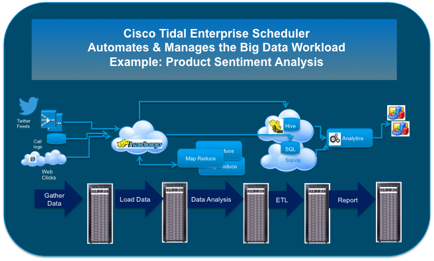































Self-Service Arrives to Workload Automation. Have Your Users Paint Your Fence.
It's close to 11 p.m. on the last day of the quarter. And I.T. gets an urgent request to post-pone a closing of the books process because there's a large order stuck in the CRM system. This means that it won't hit the books and be recorded as a sale. The customer won't get her order, the salesperson won't get paid and finance will show a missing number.
Making matters more complicated, there's a large marketing workload to process sentiment analysis that kicks off after close of business. That whole workload looks like this:

This generates an urgent call to the team that manages the workload automation platform: Hold the closing workflow! Stop the presses! And postpone the Hadoop workflow.
The admins have to get to their console find the job and pause it. Not a huge deal, except there are thousands of jobs to be run and hundreds of business people calling on a regular basis, at all kind of hours.
Some customers have created help desks for their workload automation teams or even off-shore to serve these kinds of requests.
Introducing Self-Service for workload automation.
New in Cisco Tidal Enterprise Scheduler (TES) 6.1 is the powerful, award-winning portal Cisco Services portal (acquired with newScale).
The new self-service portal empowers business users of TES business with the ability to interact with their processes in a "safe & sane" manner without IT involvement and without any technical knowledge.
In my prior example, a finance person could have postponed processing without having to go to IT.
Self Service is designed for the business user that wants to Control jobs runs that have been authorized for him/her, including commands such as
 Tags quentes :
Nuvem
automation
Tags quentes :
Nuvem
automation